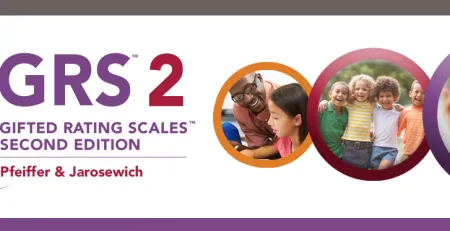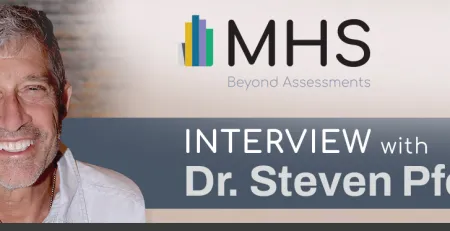Enhancing ADHD Assessment: Conners 4 Multi-Rater Reports
The Conners 4th Edition (Conners 4®) provides a comprehensive assessment of symptoms and impairments associated with ADHD and common co-occurring problems and disorders in children and youth aged 6 to 18 years. The Conners 4 is designed to gather information from multiple sources, including one or more parents/guardians (using the Conners 4 Parent form), one or more teachers (using the Conners 4 Teacher form), and the youth themself (using the Conners 4 Self-Report). MHS is proud to introduce the NEW Conners 4 Multi-Rater Report.
Introducing the Conners 4 Multi-Rater Report
The Conners 4 can be rated by parents (or guardians), teachers, or youth (using the Self-Report form). Parent ratings provide insights into the youth’s behavior at home and in other settings. Teacher ratings offer observations into the youth’s social, emotional, and academic performance within the school environment. Self-report ratings complement parent and teacher assessments by providing the youth’s perspective on their functioning and indicating their awareness of their feelings, thoughts, and behaviors. Parents and teachers can rate a youth aged 6 to 18, whereas the youth self-report is available for individuals aged 8 to 18. Wherever possible, the Conners 4 Parent, Teacher, and Self-Report scales are aligned to facilitate the comparison of information across informants.
Ratings from parents, teachers, and youth were compared in a study during the development of the Conners 4. Overall, there was similarity in the scores between different informants, lending evidence to the precision of the Conners 4 to measure the same concepts for different raters. However, similarity in scale scores varied depending on the content area; for example, scales that are more readily observed or outwardly expressed, such as Hyperactivity, showed the greatest agreement among raters, while scales that are harder to observe had a somewhat lower agreement. This difference highlights the unique perspectives of each rater and the utility of obtaining information from multiple individuals.
An efficient way to integrate all the information from multiple raters is by using the Conners 4 Multi-Rater report feature. Using the Conners 4 Multi-Rater report to discern how ADHD symptoms manifest across diverse settings, clinicians and school psychologists can compare scores across raters, identify significant differences across domains, and craft tailored intervention or support strategies informed by data from all involved. This ongoing monitoring increases the probability of successful outcomes and ensures treatment, interventions, and support evolve in alignment with the individual’s changing needs.
The Conners 4 Multi-Rater report provides the results of multiple raters in a single report, highlighting statistically significant inter-rater differences in scores and any critical areas that need further examination.
Why Multiple Informants Matter in ADHD Assessment
The dynamic nature of ADHD symptomology, encompassing attention difficulties, impulsivity, and restlessness, underscores the importance of considering diverse perspectives influenced by varying environments and contexts. Information gathered from multiple informants can provide a comprehensive understanding of the individual’s symptoms and functioning.
Here’s why multiple informants improve ADHD assessment:
- Diverse Perspectives: Individuals with ADHD often exhibit different behaviors in different environments. Symptoms and impairments of youth vary in terms of the contexts where they might be displayed, and raters (parents, teachers) have varying degrees of insight and access to observe the youth’s behavior1. Some aspects of ADHD may be fully internalized and invisible to parents or teachers; therefore, the youth’s perspective is unique in that way (e.g., cognitive impairments, thoughts of self-harm). Understanding this variability in symptom presentation as a function of environment can help provide insight into how a youth’s ADHD functions.
- Enhanced Accuracy: By gathering information from multiple informants, clinicians and school psychologists can gain insights into how ADHD symptoms manifest across various settings, facilitating a more accurate assessment of the youth. Engaging multiple informants helps identify any discrepancies or inconsistencies in the information provided2. For example, for some youth, the symptoms of ADHD are more likely to negatively impact in a more structured school setting than in a less demanding home environment.
- Increased Reliability: When symptoms are consistently reported across different settings and by different people, it provides more confidence that the observed behaviors are indicative of ADHD rather than situational factors.
- Reducing Bias: Relying solely on self-report or a single informant can introduce biases. Individuals with ADHD may underreport or exaggerate symptoms based on their thoughts and feelings, while parents or guardians may overemphasize certain behaviors3. Incorporating perspectives from teachers, caregivers, and other relevant individuals helps mitigate these biases, leading to a more balanced and reliable assessment.
- Comprehensive Evaluation: ADHD assessment should encompass a holistic view of the individual’s functioning. Each informant contributes unique observations and experiences, enriching the assessment process. Combining information from various sources allows one to identify patterns, corroborate findings, and gain a comprehensive understanding of the youth’s strengths and challenges.
Involving multiple informants in the assessment process fosters collaboration among stakeholders, including parents, teachers, and healthcare providers, amplifying the breadth of perspectives considered. This collaborative approach ensures comprehensive consideration of all relevant factors, thereby augmenting the likelihood of successful intervention outcomes.
How does the Conners 4 Multi-Rater Report work?
- The Conners 4 Multi-Rater report combines the results of up to five raters to provide an overview of the youth’s behavior from a multi-rater perspective. It highlights potentially important inter-rater differences in scores and is available for the full-length Conners 4, Conners 4–Short, and the Conners 4–ADHD Index.
- The report details potentially important inter-rater differences and similarities in scores, including an indication of which scales and items (if any) are flagged or elevated for any rater.
- Also, significant differences between raters’ scores are automatically calculated and included in this report.
The significance of incorporating multiple informants in ADHD assessment cannot be emphasized enough. The introduction of the Conners 4 Multi-Rater report marks a significant advancement in ADHD assessment by recognizing the importance of gathering insights from multiple informants. By integrating perspectives from parents, teachers, and the youth, this feature enhances the evaluation process’s accuracy, reliability, and comprehensiveness.
Visit our storefront and learn more about the Conners 4.
Have questions? Get in touch with us.
References
1 De Los Reyes, A. (2011). Introduction to the special section: More than measurement error: Discovering meaning behind informant discrepancies in clinical assessments of children and adolescents. Journal of Clinical Child & Adolescent Psychology, 40(1), 1-9.
2 Power, T. J., Watkins, M. W., Anastopoulos, A. D., Reid, R., Lambert, M. C., & DuPaul, G. J. (2017). Multi-informant assessment of ADHD symptom-related impairments among children and adolescents. Journal of Clinical Child & Adolescent Psychology, 46(5), 661-674.
3 De Los Reyes, A., Cook, C. R., Gresham, F. M., Makol, B. A., & Wang, M. (2019). Informant discrepancies in assessments of psychosocial functioning in school-based services and research: Review and directions for future research. Journal of school psychology, 74, 74-89.










